For an organic gardener, the secret of success lies in the soil, and the best thing you can do for your soil is to learn how to make compost of your own. Compost is magical stuff – made from waste materials, it has the ability to both hold moisture in the soil and to improve drainage. It contains nutrients to feed plants and other soil life and improves soil structure. It can do all of this whether you dig it in when you dig over your plot, or if it’s used as a mulch on the soil surface as part of a No Dig gardening system.
There are lots of different methods of making compost, and which one is best for you depends on your circumstances, but they are all simply methods of encouraging organic matter to rot down into dark, crumbly and fresh-smelling compost. Or as gardeners like to call it, black gold.
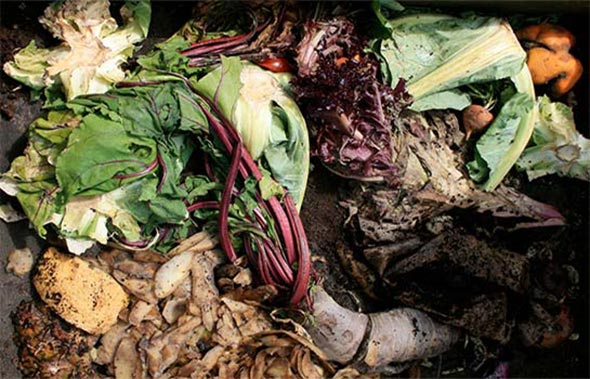
The composting process relies on a number of micro-organisms doing their job, and its their needs we have to meet when we’re making compost. They need a combination of nitrogen (found in ‘greens’, fresh and leafy material and kitchen waste) and carbon (from ‘browns’, drier and woodier stems, cardboard and paper) together with fresh air (for the oxygen) and a supply of water. Composting proceeds slowly at low temperatures, and much more rapidly at warmer ones.
Whatever form of composting you choose, it’s best to avoid adding meat, fish, dairy products and cooked food to your compost heap. Not only do they smell as they rot down, but they also attract rats. Add those things to your council food waste collection, where they can be safely composted in enclosed (‘in-vessel’), commercial composting systems.
You don’t need a compost bin to make compost, but they do help keep materials together, and look a bit tidier in back gardens. You can make your own from pallets and other recycled materials, or buy a plastic compost bin (often at a discount from the local council). If your budget can stretch to it, there are all kinds of attractive wooden compost bins on the market.
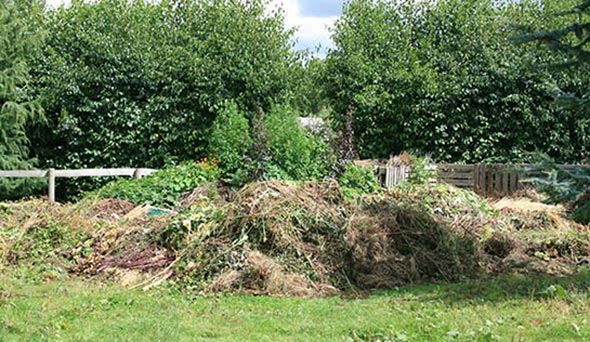
The traditional system of making compost is Hot Composting, so called because the process produces a lot of heat that encourages a rapid break down of the composting material. In hot composting, a large compost heap (at least a square metre in size) is created from alternate layers of ‘greens’ and browns’, assembled all together in one go.
After two or three days, the centre of the heap heats up, and fuels rapid composting. But once it has exhausted the oxygen supply, the heap cools down – that usually takes another couple of days. Then the gardener turns the compost into a new heap, mixing the materials together in the process and adding plenty of fresh air. The heap heats up again, and then cools down. The heap is then turned once more, and then left for weeks (or months, in cold weather) to mature.
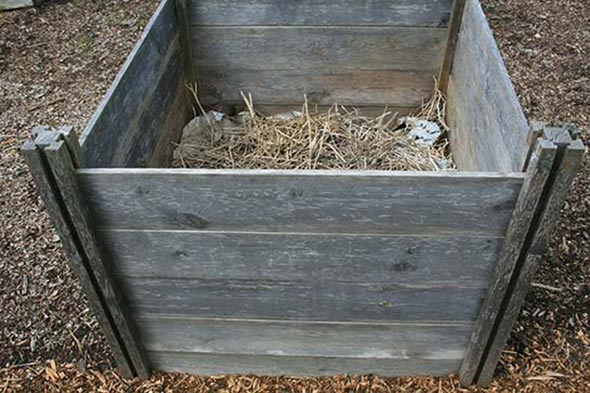
The advantage of the hot composting method is that the heap heats up enough to kill weed seeds and plant pests and diseases. The disadvantage is that is requires space (you have to store all the materials until you’re ready to build the heap, and it’s easiest if you have three separate bins so that you can turn it from one to another) and a lot of effort on the part of the gardener. It’s quicker than most other methods, though, and does produce good compost relatively quickly.
The Hot Composting system is fine for large gardens and allotments, but for the average back garden it’s too hard to handle. Cold Composting is a small-scale alternative, and ideal for households who want to compost some of their kitchen waste along with their prunings and lawn clippings.
With cold composting, materials are added to the compost bin as and when they become available. Cardboard and newspaper are added along with kitchen waste, and in most households this produces a fairly good mix of ‘greens’ and ‘browns’ to fuel the composting process, although it’s important not to add a whole lawn’s worth of clippings in one go as that’s apt to produce a wet and slimy mess.
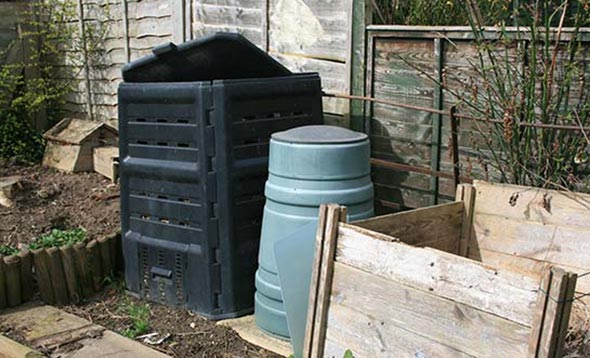
Cold composting proceeds more slowly, and doesn’t use up its oxygen supply as quickly, and so it’s not essential to turn the compost. Crumpling the newspaper before you add it, or including corrugated cardboard in the mix, allows air pockets to form and adds extra oxygen. Whereas hot composting is a batch process, making large amounts of compost in one go, cold composting can be treated as a continuous process. Many plastic compost bins allow you to collect finished compost from the bottom of the bin whilst adding new materials to the top; or you can have two bins and add new materials to the second whilst allowing the first to rot down.
Cold composting takes months to produce finished compost, and can’t deal with weed seeds and diseases, but it does make good compost and is much easier to fit in to a busy lifestyle.
If you have more kitchen waste to compost than garden waste, then composting worms are the answer. Worm composting uses worms (known as red wigglers) that are native to the UK. Each worm can eat its own weight in waste every day, and although that may not seem like much, a worm compost bin starts with a population of at least a thousand worms, who then reproduce until there are enough to deal with the level of waste (they call it food!) that you produce. And then the population levels out – at no point will you be overrun with worms.
Worm composters are great for dealing with all vegetable food waste – tea bags and coffee grounds, kitchen paper, fruit and vegetable peelings, and anything that goes mouldy in the fridge. They can also deal with small amounts of cooked vegetable matter. Worm composters produce a small amount of super-rich compost that is great for feeding container plants or anything particularly hungry in the vegetable patch. But their main output is a brown liquid that makes an excellent plant feed when watered down to the colour of weak tea. It has a good mixture of nutrients, being made from everything you didn’t eat.
The thing to bear in mind with worm composters is that the worms rely on you to keep their environment healthy. They need to be protected from freezing in winter, and boiling in summer.
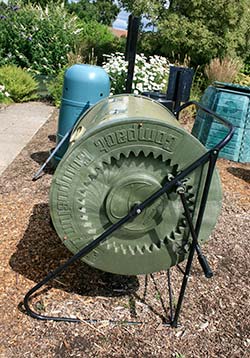
They need to be kept moist, but can drown if the liquid produced isn’t allowed to drain off. In short, although they can be left alone for a fortnight while you’re on holiday, worm composters need regular checking to make sure everything is proceeding according to plan.
These are the main methods of composting. You will also find compost tumbers that are turned regularly to produce batches of compost quickly – but they’re expensive to buy, and the compost still needs time to mature before you can use it.
Trench composting simply involves burying your waste in a section of the garden that you will use for (e.g.) growing beans or squashes next year. And Bokashi isn’t really a system of composting, but a way of treating food waste (including meat, fish and dairy) so that it doesn’t attract rats and will rapidly compost down in a normal composting system.
